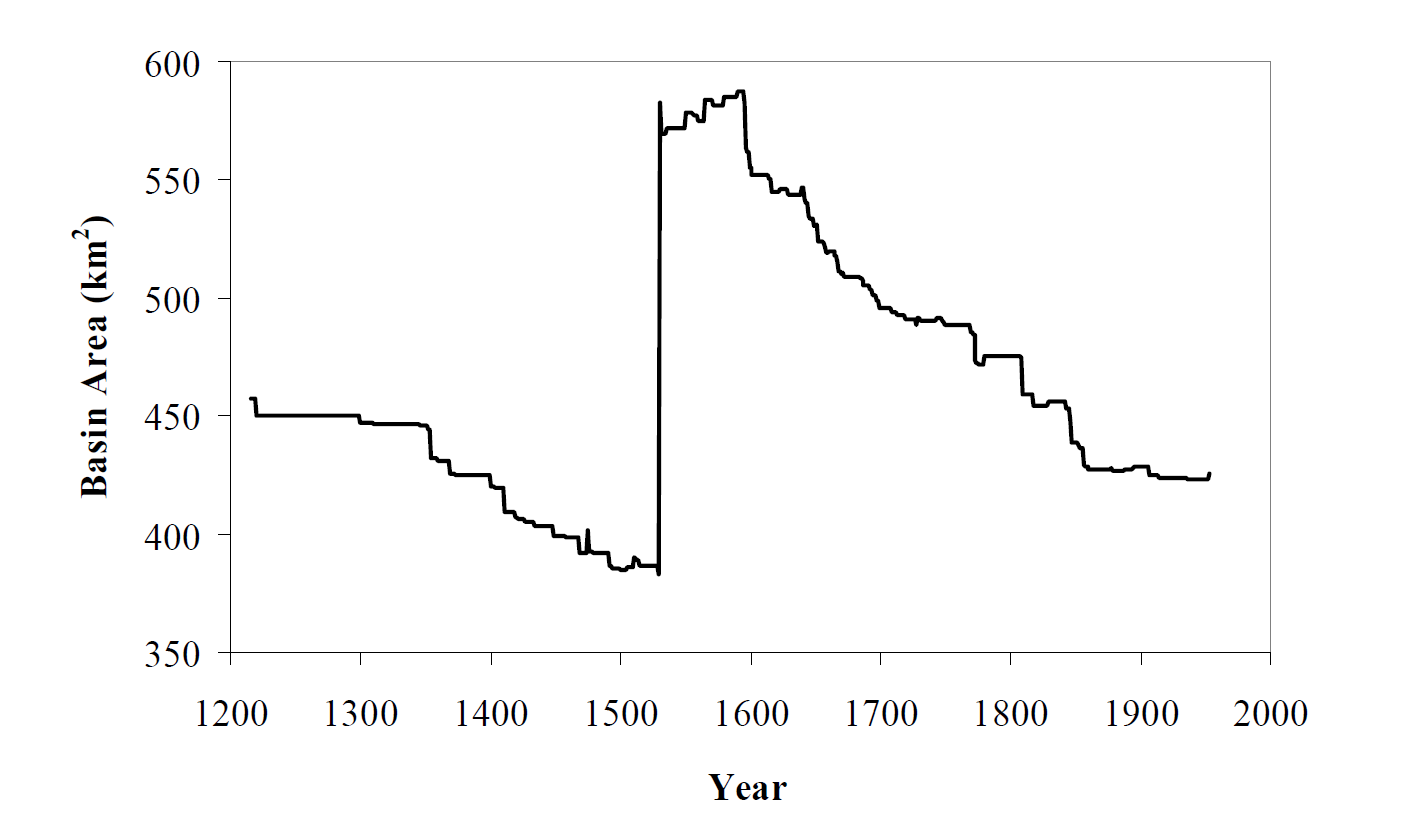Tidal basin
The Eastern Scheldt tidal basin has changed drastically in the past five centuries under the influence of both human interventions and extreme events. The trend of continuously increasing of the tidal prism and continuously deepening of the channels has been set in motion by the inundations in the 16th century (large storm surge in 1530) and the land reclamation since then. These have not been able to reverse the trend, but have probably only amplified the exporting trend. Due to the construction of back-barriers (1965 & 1969) the tidal prism increased even more, resulting in pushing the basin even more out of equilibrium than it already was. After construction of the storm surge barrier (1983-1986) a decrease of tidal currents occur, resulting in a decrease in sediment transport capacity. This in turn causes erosion of shoals and flats and sedimentation in the channels (see ‘Channel-shoal interaction’), and probably also the vanishing of sediment exchange (see ‘Sediment exchange’) between the basin and the ebb-tidal delta. These developments and effects on the tidal basin due to the interventions are described below.
Historical development
In 1530 A.D. a storm surge inundated large areas in the landward part of the basin, and in the following four centuries local inhabitants reclaimed about as much land as was lost during that storm (see figure below). Modelling of physical processes for schematized tidal basins representing the various historical situations showed that the large-scale inundations caused the basin to scour to greater depth.

Analysis of these observations, supported by hydrodynamic and sediment transport models, led to the conclusion that the morphological evolution of the Eastern Scheldt basin was dominated by a sediment exporting trend, with a continuously increasing tidal prism and continuously deepening channels. This trend has been set in motion by the inundations in the 16th century and the land reclamations since then have not been able to reverse these trends, but have probably only amplified the exporting trend. Tidal asymmetry seems to be much more sensitive to the depth of the channels than to the size of the intertidal area in this particular case. As a result of the scouring, also the tidal watershed between the Eastern Scheldt and the Grevelingen, the next basin to the north, has disappeared. This happened when the residual longshore tidal current across this tidal watershed increased and scoured the connection between the estuaries to a greater depth.
Human interventions: completion of the Delta Works
The Eastern Scheldt tidal basin has undergone substantial changes due to human intervention in the past few decades. The construction of two back-barrier dams in 1965 and 1969 had a significant impact on the tidal hydrodynamics and sediment transport. The response to these interventions was still ongoing when the hydrodynamic regime was altered again by the construction of the storm surge barrier between 1983 and 1986.
In the decades before 1965, the Eastern Scheldt already exported large quantities of sediment to the sea. The implementation of the back-barrier dams caused a significant increase in tidal prism, which yielded a response of the bathymetry. The rates of sediment export, channel deepening and ebb-tidal delta growth further increased. Analyses of tidal flow measurements and model output show a persistent trend to export sediment. The construction of the back-barrier dams amplified this export by increasing the tidal prism, thus pushing the basin even more out of equilibrium than it already was.
The Eastern Scheldt storm surge barrier was the first of its kind ever implemented in a tidal inlet. An inevitable effect of such a structure is constriction of the flow-conveying cross-sectional area of the inlet. This constriction caused a decrease of tidal current velocities inside and outside the basin, hence an even sharper decrease in sediment transport capacity. This in turn causes erosion of shoals and flats and sedimentation in the channels, and probably also the vanishing of sediment exchange between the basin and the ebb-tidal delta. These effects have to be kept in mind whenever the construction of a storm surge barrier is considered anywhere else in the world.
